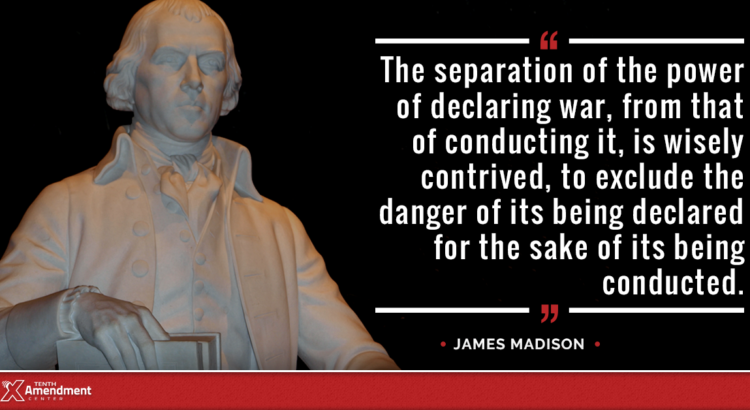Going to war is a serious business – deadly serious, which is why our founders in their great wisdom posited the authority to commence war in the hands of those who represented the citizens who would have to finance, fight and die in it. As I mentioned in closing last week (http://frankkuchar.com/348-2/), going to war not only requires the legislature to declare it, but also the concurrence of the President as well. This not only creates a separation of powers, but a second backstop against a headlong rush into an unwise war.
We have had many wars in our history of, which only five were congressionally-declared wars (six if you separate out our declaration of war against Romania in 1942 from the declaration in 1941 against the Axis powers with which Romania was allied), and only one of them was an actual declaration to go to war – the other four were in response to our having been attacked. Until recently, all of these military engagements were viewed as “war”; now, however, they have been also referred to as “police action” or simply “conflict.” However, to those who fought, bled and died in them, they were wars. Two such wars that were called such were the Korean and Vietnam Wars.
In the aftermath of our disastrous war in Vietnam (which was an undeclared war), Congress passed the War Powers Resolution of 1973 in an effort to restrict the President’s ability to commit US forces into battle without first getting congressional approval. It is an unnecessary, useless and dangerous act and cuts across the grain of the intent of the Constitution to vest war-making powers in the hands of the legislature.
The resolution gives “statutory authorization” for the President to commit US forces into a military engagement or if there is “a national emergency created by attack upon the United States, its territories or possessions, or its armed forces.” It requires him to notify Congress within 48 hours of his action and that those forces he has committed may only remain in the battlefield for 60 days (plus an additional 30 days for withdrawal) without securing additional congressional approval or formal declaration of war.
This resolution is foolish and dangerous on two grounds. First, it cuts against the intent of the Constitution by allowing this broad, nebulous “statutory authorization” to in fact decide to go to war. To declare war means there must be an enemy against whom this declaration is made – there cannot, constitutionally, be this vague, blanket “statutory authorization” for the President to use our military when and how he sees fit! Second, once the President decides, without a formal congressional declaration of war, to let our military loose in some part of the world, his action could turn into a full-blown conflagration, and then Congress would have to declare a formal state of war, even if it didn’t want to. In effect, this strips away the separation of powers our founders intended in this gravest of acts.
Furthermore, it is unnecessary in that the President fulfills the role of the Commander-in-Chief, meaning he calls the shots with the military when we are at war. He cannot, constitutionally, unless we are attacked and immediate response is required for our defense, go off on his own and launch us into a military conflict (which, remember, for those fighting it is a war). Since he is already limited by the Constitution in Article I, Section 8, Clause 11, there is no need for this resolution.
Those who are elected to the office of the Presidency need to be reminded of their limitations and Congress needs to step up and take back their authority as our founders intended. If this was to occur, then perhaps much bloodshed and needless suffering and expense could be prevented.
-June 2, 2017
